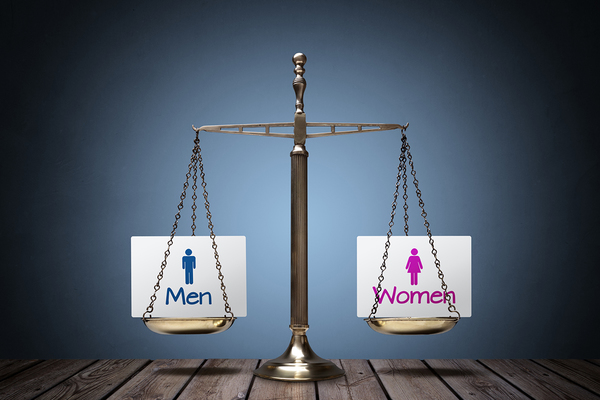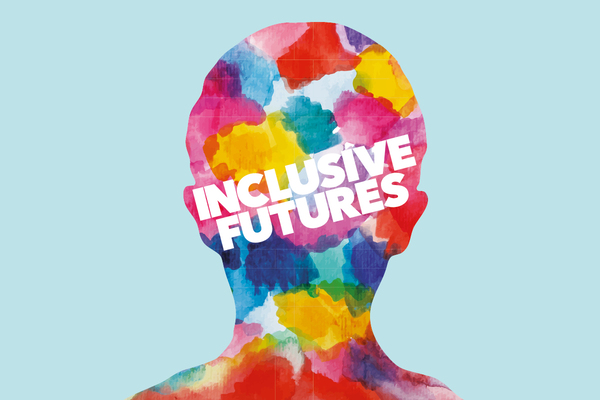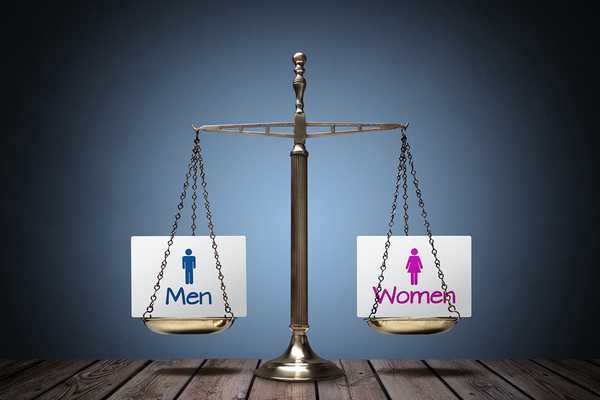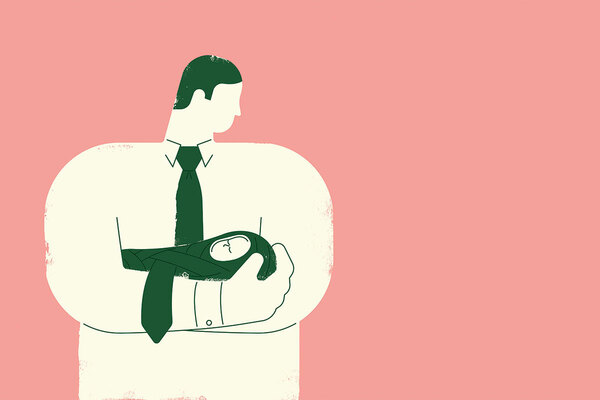You are viewing 1 of your 1 free articles
The housing sector is taking steps to reduce the gender and race pay gap
This year’s figures show the fruit of some attempts to improve pay equality in the housing sector, writes Nicola Ihnatowicz
Inside Housing’s Inclusive Futures campaign aims to promote diversity and inclusion among housing’s leadership teams
The 4 April deadline for large employers to publish their second gender pay report has just passed and some key trends are emerging from the gender pay reports of the G15 group of large housing associations in London.
Generally, as was the case last year, the mean pay gap is not too high (the highest reported gap is 24.5% at A2Dominion, while the lowest is 4.8% at Catalyst), and it has generally narrowed. Although the gender pay gap in this sector is not as glaring as in others, it is still an issue for associations to tackle.
The housing sector benefits from having a number of high-profile women in chief executive and other senior roles but as a whole, women remain under-represented at senior levels on average. Another common theme is the prevalence of women in part-time roles in comparison with men, which tends to have a significant effect on the gap in bonus pay, which is reported as a total figure and isn’t prorated for part-time work.
The typically higher proportion of senior men working in functions such as development, property services and technology also has an impact, where actual or perceived skills shortages and competition for talent with the private sector can drive the market for higher salaries.
Housing associations that hold a care business have their own challenges.
Although it was notable last year for reports of a zero or negative gender pay gap (due to a predominance of women in the care sector as a whole), the picture is different for housing providers with care businesses.
Although a high proportion of employees in these businesses are women, the roles attract lower salaries due to external and market factors, such as prices set by the commissioners of the services over which the provider has little control.
The race pay gap must also be considered.
It is not currently mandatory to measure or report the race pay gap, but three members of the G15 have done so voluntarily.
The calculation has excluded employees who have not shared their ethnicity with their employer.
“The race pay gap must also be considered....as with the gender gap, the key issue is lack of representation at senior levels”
The lowest median pay gap reported is 1.8% at Hyde, while the highest is 18.5% at Optivo.
L&Q reported a gap of 3.1%.
As with the gender gap, the key issue is lack of representation at senior levels.
Having a pay gap is not, on its own, unlawful. But the law works to nudge employers in the direction of closing the gaps by anticipating the embarrassment of having a high gap.
And it’s working.
Employers across the G15 group are adopting a range of measures to improve diversity across their workforces.
The Rooney Rule (when recruiting for senior positions, an organisation must interview a BME applicant) is promoted by Leadership 2025, supported by the mayor of London.
The programme, currently in its second year, supports the development of the next generation of senior BME talent in the sector.
L&Q has already adopted a policy of ensuring that at least one BME candidate is shortlisted for every senior role, provided they meet the minimum criteria, and Optivo has committed to supporting leadership development within the BME community in line with Leadership 2025. Meanwhile in an enhancement to the Rooney Rule, Hyde will be introducing a requirement for all shortlists to contain a mix of male and female candidates, with the aim of the shortlists being as ethnically diverse as possible.
A2Dominion reports on a diversity audit that has resulted in a new steering board launched to ensure the encouragement and implementation of diversity.
Several associations are introducing training on unconscious bias and L&Q has set aspirational targets of 50% female and 30% BME appointments into their senior leadership group to reflect the make-up of its diverse workforce.
Other measures adopted include the development of strategies and frameworks to nurture talent. Optivo refers to a reward framework to enable career progression and close the gap on male and female pay parity issues, while L&Q talks about developing a succession and talent management strategy to encourage staff to succeed and progress.
“Optivo also commits to reviewing gender pay and diversity data on a six-monthly basis”
There is also a drive to scrutinise recruitment into senior roles, with L&Q setting the target of reviewing these every quarter and publishing the results.
Optivo also commits to reviewing gender pay and diversity data on a six-monthly basis and reporting back to its people, governance and remuneration committee.
The reports emphasise transparency about pay, ensuring that job adverts encourage a range of potential applicants by referencing flexible working, and using channels that are likely to attract more female and BME applicants.
Diversity is clearly valued by the sector and taken seriously, and over the coming months many measures will be implemented to attempt to narrow the gender and race pay gap, which hopefully will start to show progress next year.
Nicola Ihnatowicz, employment partner, Trowers & Hamlins
Largest housing associations' median gender pay gap comparison 2018/19
| Housing association | 2018 | 2019 |
|---|---|---|
| Places for People | -5.50% | 0.90% |
| Clarion Housing Group Limited | -1.80% | 0.70% |
| Sanctuary Group | 11.30% | 20.90% |
| L&Q | 9.50% | 7.60% |
| The Guinness Partnership | -4.80% | -0.20% |
| Sovereign | 7.20% | 7.40% |
| Peabody Trust | -7% | 0% |
| Home Group | 5.30% | 7.20% |
| Riverside | 6% | -0.30% |
| Hyde | 4.10% | 2.60% |
| Optivo | 12.75% | 7.76% |
| Orbit | 17.30% | 21% |
| A2 Dominion | 20% | 20.90% |
| LiveWest | 8.73% | N/A |
| Together | 10.50% | 11.50% |
Inclusive Futures
Inside Housing’s Inclusive Futures campaign aims to promote and celebrate diversity and inclusion.
We are pledging to publish diversity audits of our own coverage.
We are also committed to proactively promoting positive role models.
We will do this through the pages of Inside Housing. But we will also seek to support other publications and events organisations to be more inclusive.
Our Inclusive Futures Bureau will provide a database of speakers and commentators from all backgrounds, for use by all media organisations.
We are also challenging readers to take five clear steps to promote diversity, informed by the Chartered Institute of Housing’s diversity commission and the Leadership 2025 project.
THE INCLUSIVE FUTURES CHALLENGE
Inside Housing calls on organisations to sign up to an inclusive future by taking five steps:
Prioritise diversity and inclusion at the top: commitment and persistence from chief executives, directors and chairs in setting goals and monitoring progress.
Collect data on the diversity of your board, leadership and total workforce and publish annually with your annual report. Consider gender, ethnicity, disability, sexuality, age, and representation of tenants on the board.
Set aspirational targets for recruitment to the executive team, board and committees from under-represented groups.
Challenge recruiting staff and agencies to ensure that all shortlists include candidates from under-represented groups.
Make diversity and inclusion a core theme in your talent management strategy to ensure you support people from under-represented groups to progress their careers.
INSIDE HOUSING’S PLEDGES
We will take proactive steps to promote positive role models from under-represented groups and provide information to support change.
We pledge to:
Publish diversity audits: We will audit the diversity of the commentators we feature. We will formalise this process and publish the results for future audits twice a year.
Promote role models: We will work to highlight leading lights from specific under-represented groups, starting in early 2018 with our new BME Leaders List.
Launch Inclusive Futures Bureau: We will work with the sector to compile a database of speakers, commentators and experts from under-represented groups. The bureau will be available to events organisers, media outlets and publications to support them to better represent the talent in the sector.
Take forward the Women in Housing Awards: Inside Housing has taken on these successful awards and will work to grow and develop them.
Convene Inclusive Futures Summit: Our new high-level event will support organisations to develop and implement strategies to become more diverse and inclusive.
THE CASE FOR CHANGE
34%
of housing association chief executives are female
1%
of housing association executives have a disability
1.6%
of housing association board members are LGBT
Women make up 46% of the UK workforce, but Inside Housing research found that they are under-represented on housing association boards (36%), executive teams (39%) and among chief executives (34%).
Almost a fifth of working-age adults have a disability (18%), yet associations reported only 1% of executives and 4.5% of board members with a disability. Many were unable to provide details.
Nationwide, 14% of the working-age population come from a BME background, climbing to 40% in London and Birmingham. Yet our research found that 6.8% of board members identified as BME, compared with 4.5% of executives.
Statistics on representation of LGBT people in the workforce are in short supply, but official statistics suggest that 2% of the total UK population identify as lesbian, gay or bisexual, rising to 4.1% for 16 to 24-year-olds. Our survey found that 1.6% of board members and 10 executives were LGBT – but most organisations were unable to provide figures.
















